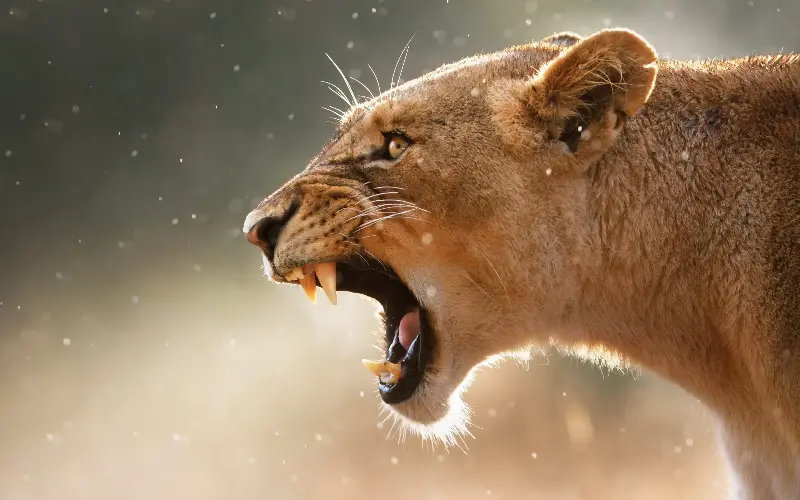
Lions have two types of roar, scientists have found.
The newly identified sound is an “intermediary roar” that is deployed alongside the recognisable “full-throated roar” of the predators.
Researchers from the University of Exeter used artificial intelligence to analyse the roars of animals to determine if there was more than one kind of sound.
A total of 1,414 vocalisations were analysed during a two-month study in the Nyerere National Park in Tanzania, which used microphones hidden in trees.
Scientists also obtained more than 1,700 vocalisations from collars worn by five male lions living in the Zimbabwean Bubye Valley Conservancy (BVC).
They found the intermediary roar hidden between grunts and full-blooded roars, which was distinct enough to be classified as its own sound.
Machine learning methods were able to accurately identify the two roars 95 per cent of the time, data show.
“The roaring bout is an important behaviour,” study author Jonathan Growcott, a PhD student at the the University of Exeter, told The Telegraph.
“Not only does it act as a signal to other lions within their pride as to where they may be, but, to non-friendly lions, bouts can be used to advertise territorial boundaries.
“Unfortunately, we are no closer to understanding what the communicative differences of the two roar types may be. But it has long been considered that lion roars may convey information relating to pride size, age or individual.”
Lion roars are unique and can act as a signature to allow for identification of a specific lion and scientists are hopeful that recording roars could one day be a reliable way to count individuals and calculate pride density.
Lions are considered “vulnerable” and there are around 25,000 animals in the wild in Africa, around half of the number at the start of the century.
Mr Growcott added: “Until now, identifying these roars relied heavily on expert judgment, introducing potential human bias.
“Our new approach using AI promises more accurate and less subjective monitoring, which is crucial for conservationists working to protect dwindling lion populations.
“We believe there needs to be a paradigm shift in wildlife monitoring and a large-scale change to using passive acoustic techniques.
“As bioacoustics improve, they’ll be vital for the effective conservation of lions and other threatened species.”
The study is published in the journal Ecology and Evolution.
